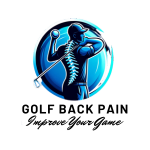How to Improve Your Golf Game and Prevent Back Pain
Are you an avid golfer but find yourself constantly struggling with back pain? You’re not alone. Many golfers experience discomfort and even injuries due to poor posture and alignment on the course. In this article, we will discuss the causes of golf back pain and how improving your posture can not only help you play better, but also prevent injuries. Say goodbye to those nagging aches and pains and hello to a better golf game! So let’s dive into the importance of posture and alignment for golfers and how you can improve yours to see a significant difference in your overall performance and well-being.
Golf is a popular sport enjoyed by many, but it can also take a toll on your body, especially your back. Swayback posture, also known as lordosis, is a common cause of back pain among golfers. This article will cover everything you need to know about swayback posture and how to prevent or alleviate back pain while improving your golf game.
Firstly, it’s important to understand what swayback posture is. It is characterized by an excessive inward curve of the spine in the lower back, causing the pelvis to tilt forward. This position can put extra strain on the muscles, ligaments, and joints in the lower back, leading to pain and discomfort.
To prevent this, it’s crucial to maintain proper posture and alignment while playing golf. Some tips for achieving proper posture include keeping your spine straight, bending your knees slightly, and engaging your core muscles. These simple adjustments can make a big difference in reducing back pain and improving your swing.
Maintaining Good Posture on the Course
Along with proper posture and alignment, there are other ways to maintain good posture on the golf course. Using proper equipment, such as a golf bag with a double strap to evenly distribute weight, can prevent strain on one side of the body. Additionally, taking breaks and stretching throughout your game can also help prevent muscle fatigue and maintain good posture.
Causes of Swayback Posture
There are various factors that can contribute to swayback posture. One of the main causes is muscle imbalances. When certain muscles in your body are stronger or tighter than others, it can cause an imbalance that affects your posture. This is common in golfers who tend to have tight hip flexors and weak glutes due to the repetitive movements involved in the sport. Poor flexibility and lack of core strength can also contribute to swayback posture.
Exercises and Stretches for Relief
If you are experiencing back pain due to swayback posture, incorporating specific exercises and stretches into your routine can help alleviate the discomfort and improve your overall fitness for golf.
Some recommended exercises include bridges, planks, and bird dogs, which target the core muscles and help improve posture. These exercises can be done at home or at the gym, making it easy to incorporate them into your daily routine.
Bridges are a great way to strengthen the glutes, hamstrings, and lower back muscles. To perform a bridge, lie on your back with your knees bent and feet flat on the ground. Lift your hips off the ground, keeping your shoulders and feet firmly planted. Hold for a few seconds before lowering back down. Repeat for several repetitions.
Planks are another effective exercise for improving core strength and posture. Begin in a push-up position with your hands directly under your shoulders. Lower down onto your forearms and hold for 30 seconds to a minute. Focus on keeping your body in a straight line from head to heels.
Bird dogs are a great way to target multiple muscle groups at once. Begin on your hands and knees with your hands directly under your shoulders and knees under your hips. Extend one arm and the opposite leg out while maintaining a neutral spine. Hold for a few seconds before returning to the starting position. Repeat on the other side for several repetitions.
In addition to these exercises, incorporating stretches into your routine can also help relieve back pain caused by swayback posture. Hip flexor stretches can help loosen tight muscles in the front of the hip, which can contribute to swayback posture. Hamstring stretches can also be beneficial in improving flexibility and reducing tension in the lower back.
Incorporating these exercises and stretches into your routine can not only help relieve back pain, but also improve your overall fitness for golf. Remember to always consult with a medical professional before starting any new exercise routine, especially if you have a pre-existing condition or injury.
In conclusion, swayback posture is a common cause of back pain among golfers. However, by understanding the causes and implementing proper posture techniques, you can prevent or alleviate back pain while improving your golf game. Remember to also incorporate exercises and stretches into your routine for relief and to maintain good posture on the course. By prioritizing proper posture and alignment, you can enjoy playing golf without the added discomfort of back pain.

